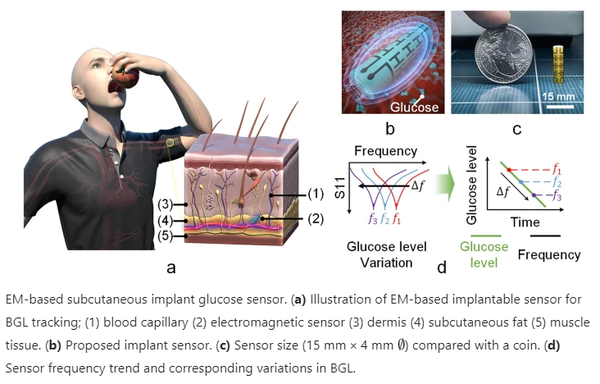An Ulsan National Institute of Science and Technology (UNIST) research team said it has developed a subcutaneous sensor that can measure blood glucose levels without finger pricks.

Diabetes mellitus is a disease in which fasting blood glucose levels are maintained above 126 mg/dL, which is higher than normal (100 mg/dL).
Diabetic patients need to maintain normal blood glucose levels by pricking their fingertips several times a day to draw blood and control their diet.
More than 400 million diabetic patients worldwide suffer from the discomfort of drawing blood every day.
A blood glucose measurement technology based on enzymes or fluorescence has also been developed as an alternative to the blood glucose measurement method through blood sampling.
However, according to the UNIST, while the enzyme-based method does not require blood, the accuracy of the enzyme decreases over time due to its short lifespan.
The enzyme-based method measures blood glucose levels by analyzing the electrons released from hydrogen peroxide, which is discharged when glucose in the blood reacts with glucose oxidase and converts into oxygen.
The fluorescence-based method, which uses a wavelength that responds to light changes when the glucose level changes, also has poor accuracy as the amount of light emitted decreases over time.
To resolve this issue, the team, led by Professor Byun Young-jae of the Department of Electrical and Electronic Engineering, developed a permanent insertable electromagnetic wave-based blood sugar measurement system that measures blood sugar without blood.
The sensor is about one-fifth the size of a cotton swab and detects changes in blood sugar in the interstitial fluid, which is the tissue fluid of cells that fills the spaces between cells in the skin.
The team also said the new sensor is convenient as it does not need to be replaced every week like an enzyme-based sensor, and it dramatically reduces the cost of using the conventional continuous blood glucose measurement (CGMS) device.
Another strong point of the device is the high accuracy of blood sugar measurement as a transplantation type is not affected by the external environment, such as surrounding temperature, humidity, and movement.
“Thanks to the advantages of the device being implantable, the accuracy of blood glucose measurement can be improved and can even satisfy the U.S. Food and Drug Administration (FDA)’s standards,” Professor Byun said. “Once transplanted, it can be used semi-permanently, and it can be operated with low power, allowing patients to check their blood sugar at any time with a device or smartphone that uses NFC (Near Field Communication).”
The results of the research were published in Scientific Reports.

